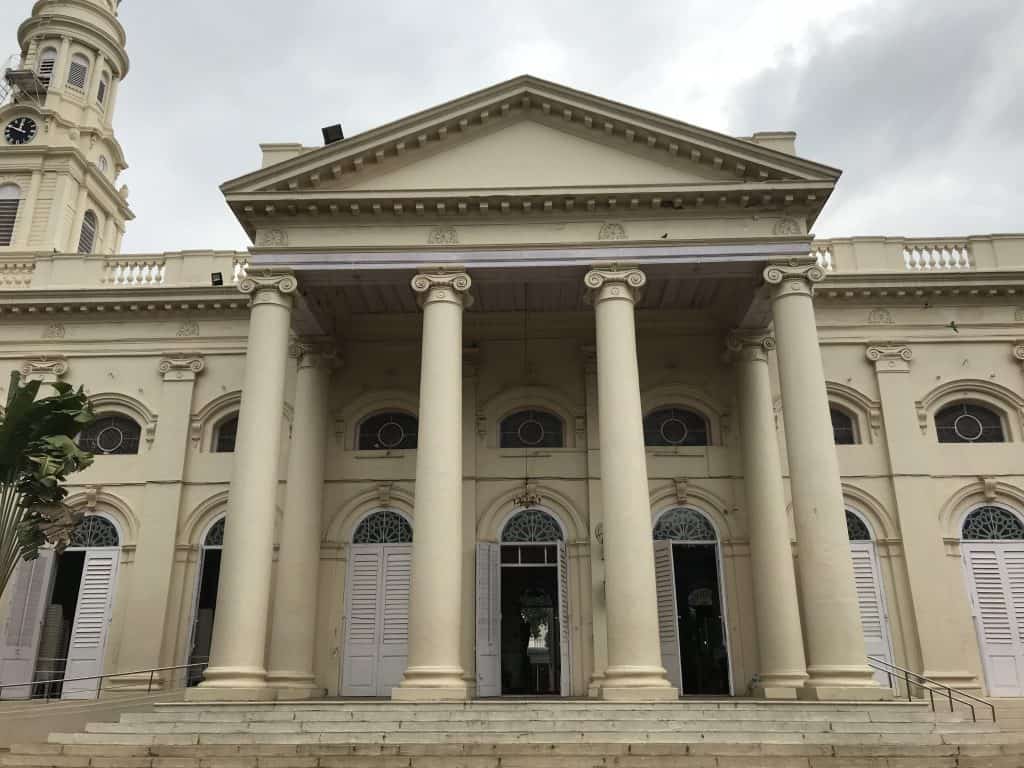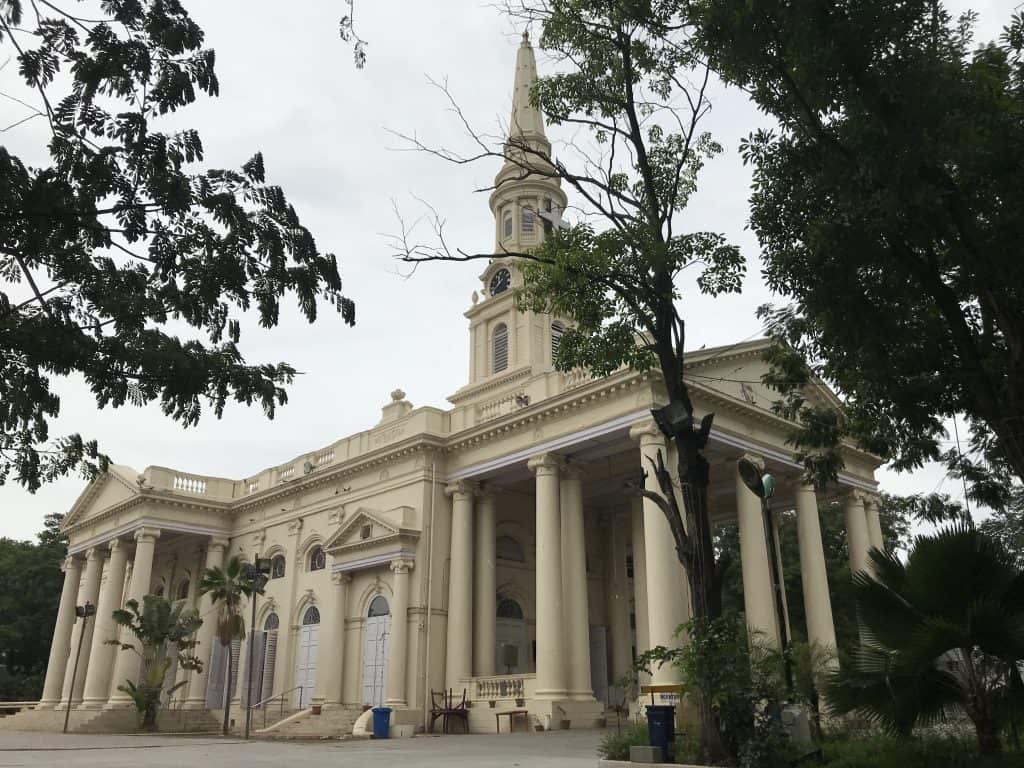Just beyond the mad rush of Gemini Circle is a haven of quiet, lending its name to the road it is situated in-the St. George’s Cathedral. Constructed in 1815 at a cost of Rs. 207,000, the Cathedral is the Mother Church of the Diocese of Madras, part of the Church of South India.
The Great Choultry Plain
Most of what makes up today’s Nungambakkam, Teynampet and Royapettah used to be referred to as the Great Choultry Plain in 18th Century Madras. City chronicler S. Muthiah recounts that once the French lost their grip on the Carnatic after restoring Madras back to the British in 1749, John Company’s Council in Fort St. George began parcelling out land to its servants outside the Fort’s ramparts. This area, on either side of Mount Road came to be known as the Great Choultry Plain,
With many Englishmen preferring to get out of the confines of the Fort, the area became the preferred spot for constructing airy garden houses. The St Mary’s Church at the Fort being a few miles away from the plains, it was decided that a place of worship would be constructed for the benefit of those residing in these areas.
Colonel James Caldwell of the Madras Engineers drew up plans for a Church that closely resembled the Anglican St Martin-in-the-Fields Church in London. Major Thomas de Havilland executed them and the church was thrown open to the public for worship in 1815.
A quiet haven in a bustling area
The Neo-classical edifice is built of lime and mortar; has a long nave and two side entrances. The steeple and the massive Ionic columns are important architectural elements of the cathedral and lend a majestic look to the entire edifice.
The Cathedral is famous for the many plaques it holds in memory of some of the more prominent residents of Madras. In addition to marble and brass plaques, the Cathedral also houses statues including those of Bishops Rt. Rev. Daniel Corrie, the first Bishop of Madras (1835-37) and Rt. Rev. Thomas Dealtry, Bishop of Madras from 1849-61.
Fragments of the city’s colonial legacy now lie tucked away in the Cathedral’s cemetery in the form of cenotaphs and weathered mausoleums. Though some historical suggest that the railings of the cemetery were crafted out of war booty–muskets, bayonets and pikes—from Seringapatam, these are no longer to be seen.
Take a visual stroll through the church and its history here:

The portico and side porches, all pedimented and supported on majestic Ionic columns lead into an impressive 100 ft. long nave. Dr. H. S. S. Lawrence who has been closely associated with the St. George’s Cathedral recounts that the church was constructed by the people themselves with the aid of a lottery fund.

The church was set up after the Napoleonic Wars ended in Europe. With peace in the Carnatic at the end of the 18th century, an increasing number of British left the relative safety of Fort.St. George to reside in the garden houses constructed on the plains. The Neo-classical edifice was designed by Colonel J.L. Caldwell, senior company engineer and Major Thomas de Havilland.

The Cathedral celebrates the memory of many of Madras’ prominent residents, from Bishops to businessmen and civil servants, through mural tablets and memorial stones. This plaque is sacred to the memory of Rt. Rev. Bishop Robert Caldwell, a missionary and linguist. Bishop Caldwell’s study on the comparative grammar of South Indian languages set the tone for Dravidian languages to be recognized as a distinct language family.

Cathedral also houses a handsome statue of Rt. Rev. Daniel Corrie, the first Bishop of Madras where he is seen preaching to an Indian boy in loincloth. Rev. Corrie was the driving force behind the establishment of several churches and schools. The school in George Town that started off as the Parental Academy in 1834 was later renamed as the “Bishop Corrie School”, after its first founder President, Rt. Rev. Corrie. The name still holds.

The Cathedral’s cemetery is the final resting place of some of the more prominent personalities of 19th Century Madras. The first burial here is that of the church builder de Havilland’s wife, Elizabeth de Havilland who passed away in 1818.

The chapel within the cemetery was added in 1832. The railings of the cemetery itself are said to have been fabricated from muskets and pikes, but no traces remain today.

The cathedral is the Mother Church of the Diocese of The Church of South India, Madras. The inauguration of the United Church of South India took place on 27th September 1947, bringing together different faiths such as Anglican, Presbyterian, Methodist and other congregational denominations.
If you are in the vicinity and could do with some peace and quiet, look no further. The tranquil campus is sure to transport you back to the times of the Vellakaara Durais and Memsahibs, a well-deserved escape from reality for the traffic-weary soul.
[All pics by the author]
*****
Historian S. Muthiah’s book ‘Madras Rediscovered’ and a commemorative booklet authored by Dr. H. S. S. Lawrence on the St. George’s Cathedral have been used extensively to trace the Cathedral’s history. The author wishes to thank Architect Shalini Ravikumar, part of city-based heritage conservation initiative Madras Inherited for sharing snippets from the Story of Madras by Glyn Barlow and the Madras Tercentenary Commemorative volume.